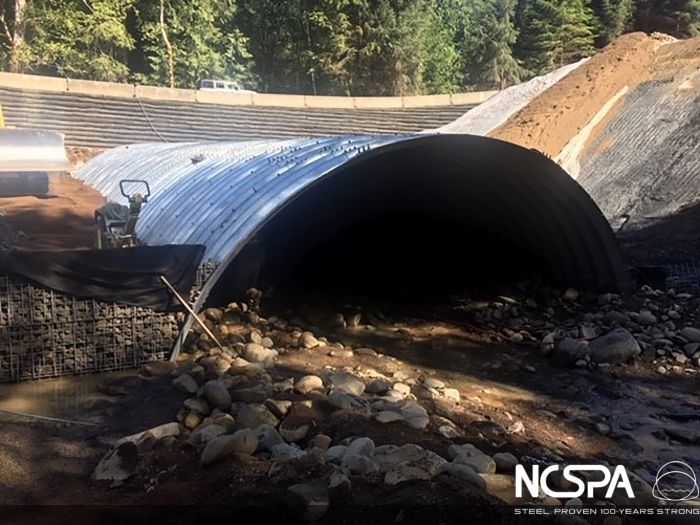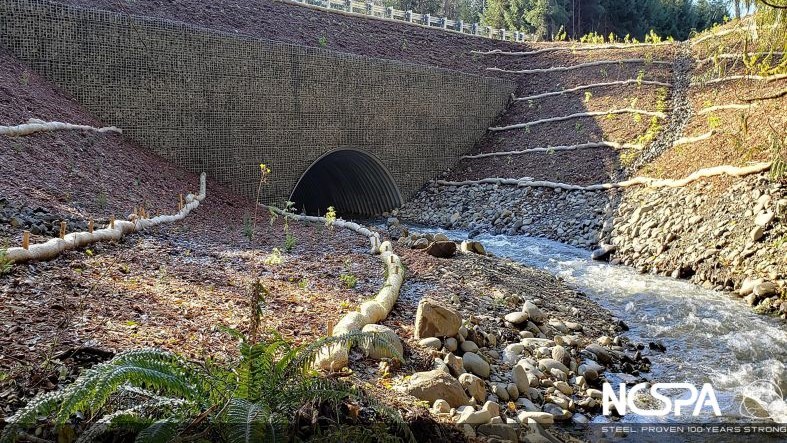
Johnson Creek Buried Bridge Wins NCSPA Project of the Year Award
Article provided by Contech Engineered Solutions and the National Corrugated Steel Pipe Association
The Johnson Creek project involved removing a fish barrier and replacing it with a fish-friendly, bottomless arch. These types of projects are generically called AOP’s (aquatic organism passages ) or simply fish passage projects. Fish passages allow for various species of fish to travel as far up a stream as they historically did to spawn prior to a barrier being placed in the stream.
The challenges on this project involved a deep excavation to get down to the streambed elevation, construct a bypass road with very steep side embankments, assemble a plate structure in the excavation, and complete by the end of the fish passage window ( spawning season ), or when the fish would begin their trek upstream.
The project was partially funded by the North Olympic Salmon Coalition, a non-profit salmon enhancement group. The plate was ordered the last week of May 2020 and arrived on site the first week of August 2020.
Prior to the plate arriving, Interwest Construction had completed the deep excavation, established a stream bypass and constructed the temporary bypass road. Hoko-Ozette Road is in a remote area and establishing a detour route was impossible, so the temporary bypass road was required. They had also completed the installation of the reinforced concrete footings for the arch foundation.
Assembly was completed in less than 8 days for the 83′ long structure. Staging the required equipment in a such a deep excavation was difficult but went as planned. The structure was then backfilled with the prescribed backfill materials and compacted to the required compaction level.
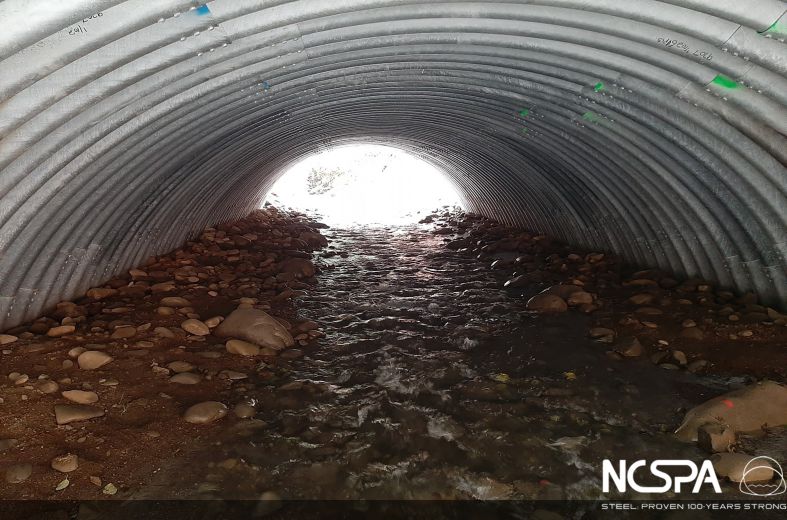
The project was completed on-time and the salmon have successfully moved upstream in the first spawning season after the construction.
Mechanically stabilized earth (MSE) headwalls were constructed at each end as the backfilling proceeded. Above the wirewall headwalls, Interwest Construction then built steep embankment slopes with planted local vegetation to complement the surrounding area.
The project was completed within the allotted time frame and the salmon have successfully already moved upstream in the first spawning season after the construction.
What are buried steel bridges?
Buried steel bridges provide an economical choices for bridge replacement or bridge rehabilitation.
They essentially are a corrugated steel pipe or structural plate pipe systems that is “buried” with backfill to carry loads through soil-structure interaction. This means the bridge structure itself and the backfill soils surrounding the structure interact with each other to support the loads. In effect, the backfill material is part of the bridge.
Because of this interaction, the bridge structure is typically lighter, and there can be significant savings in structure costs.
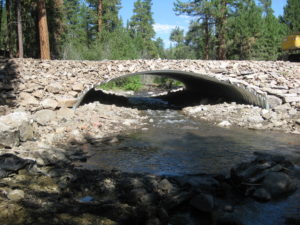
There are also many cases where buried bridges can carry heavier loads than traditional bridges because of the benefits of spreading vehicle loads through the fill. Buried bridges do not require abutments; and unless foundation soil conditions are poor, do not typically
require deep foundations.An additional benefit with buried bridges is that they can be tailored to site conditions and geometric requirements. The design includes inputs for site soils and backfill, meaning that locally available materials can often be used in construction and the structure can be tailored to fit the needs of the site and the owner’s requirements.
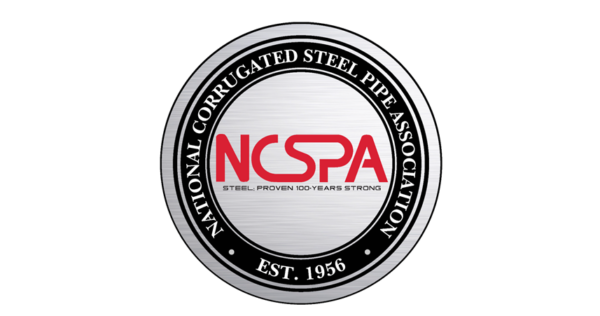 News
News
NCSPA Announces 2024 Project of the Year Winners
The National Corrugated Steel Pipe Association announced the 2024 project of the year winners, including three members of the Short Span Steel Bridge Alliance.
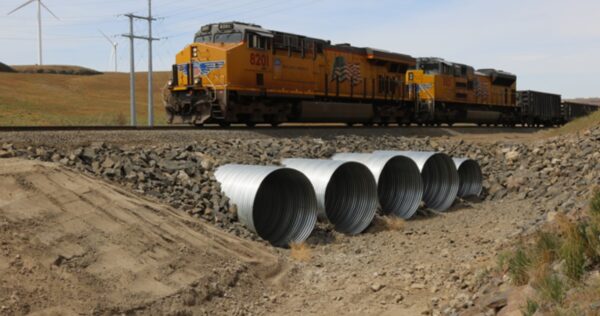 Case Study
Case Study
Corrugated Steel Pipe Safeguards Rail System from Excessive Storm Water
The National Corrugated Steel Pipe Association (NCSPA) spotlights a project that used corrugated steel pipe to provide a storm water solution in only 8 hours.
 News
News
New Resiliency Video Compares Corrugated Steel Pipe to Other Materials
The National Corrugated Steel Pipe Association (NCSPA) launched a new video focused on the resiliency of corrugated steel pipe – commonly used in buried steel bridges.
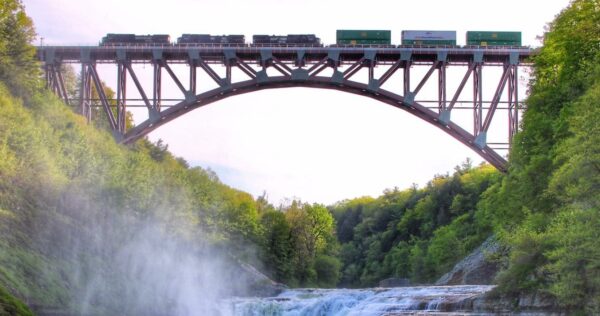 News
News
Funding On Its Way for Rail Bridges
The Biden administration announced $16.4 billion for rail projects along Amtrak’s Northeast Corridor as part of the overall investments in infrastructure.
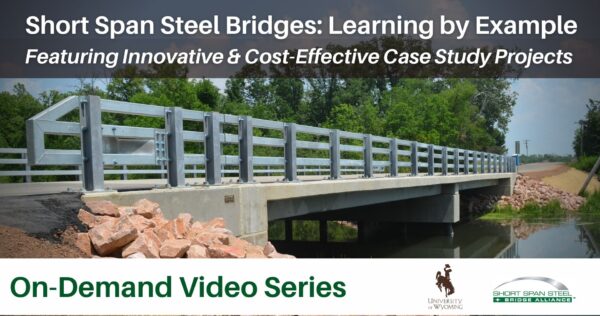 Buried Bridge
Buried Bridge
On-Demand Steel Bridge Video Series: Learning By Example
A distinguished panel of 8 industry experts to present case studies that offer innovative and cost-effective examples of steel bridge replacement projects.
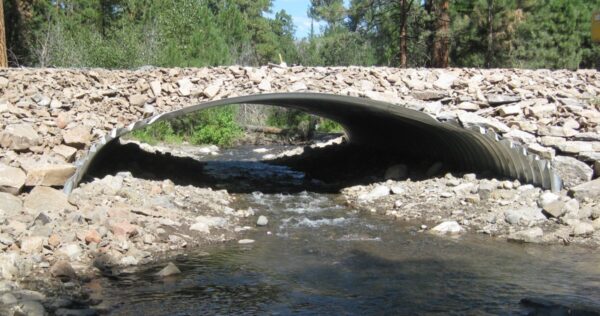 Events
Events
October 31: Webinar – Demonstrated Performance of Buried Bridges
The American Galvanizers Association invites you to attend a 1-hour webinar sustainable development and hot-dip galvanizing.
 Short Span Steel Bridges
Short Span Steel Bridges 